The latest addition to Super Smash Bros. Ultimate is Pyra and Mythra from Xenoblade Chronicles 2, two characters packed into one similar to Melee’s Zelda and Sheik. However, unlike Zelda and Shiek, it seems like both of these characters are actually viable to play around with, even without extensive knowledge of their hitboxes.
If you watched the video presentation on these two characters, a lot of what you’ll find here should sound somewhat familiar. The demonstration given by director Masahiro Sakurai about Pyra and Mythra was fairly straightforward and highlighted some of the strengths and weaknesses of these characters. However, there are some parts of the duo that Sakurai glossed over.
Pyra: The heavy hitter
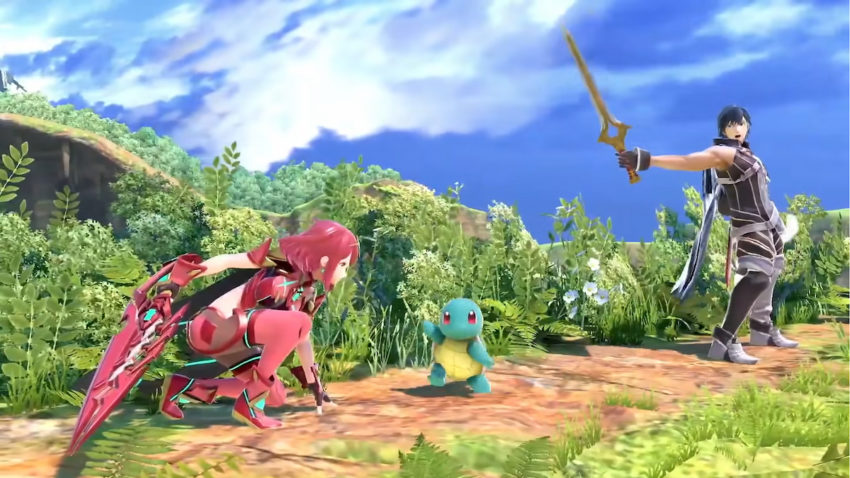
Sakurai wasn’t joking when he said that Pyra was the stronger of Ultimate’s latest duo. Her hits do a ton of damage and knockback — not just one of them, but all of them. Her forward smash has a surprising amount of range and can easily knock out an opponent around 90%. However, one of her best kill moves is her up smash. This move comes out relatively quickly and has multiple hits for whatever reason. Every hit of this move has tons of KO potential, making it deadly to anyone approaching from the air.
Speaking of the air, Pyra’s aerial attacks aren’t something to ignore either. While a majority of them are fairly standard, her up-air is by far one of the best in the game. It has a massive hitbox, large enough to hit enemies on the top platform of a battlefield map at the peak of a short hop. Like all of Pyra’s other moves, it also comes with extremely high damage and knockback.
To balance out her insane power, Pyra is slow as a snail and heavy as a ton of bricks. She doesn’t move quickly whatsoever, so don’t expect to play footsies with your enemies or pull off any tricky movement. Likewise, all of her moves come with a ton of start and end lag. If your opponent is shielding attacks and you’re not breaking that shield, you’re guaranteed to get hit.
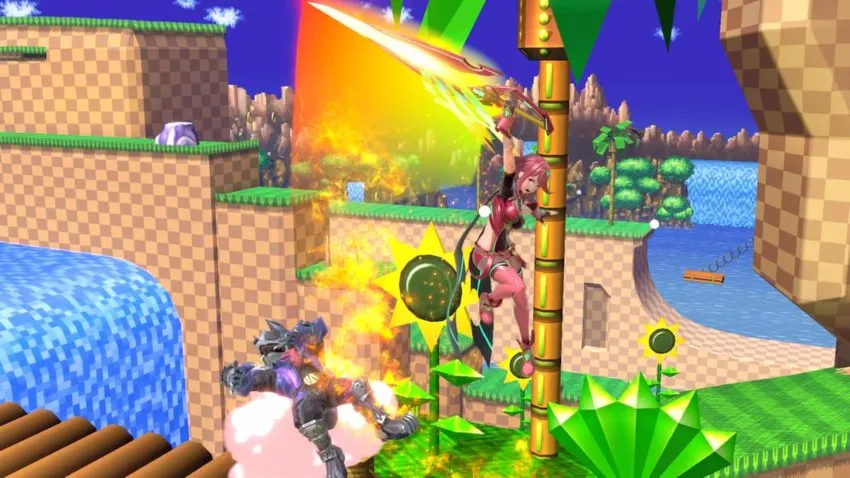
Similarly, Pyra doesn’t have much of an air game. She’s still miles above Little Mac in terms of aerial attacks, but many of her moves have a huge amount of start and end lag, leading to some moves getting stuffed by landing too early. She does have one advantage over Mythra in that her down aerial can meteor spike enemies, sending them down with no chance of coming back. However, that move has so much lag that performing it offstage, especially if you’re below the ledge, is a guaranteed self-destruct. Be extra careful when you’re recovering, because Pyra’s up special doesn’t do her any favors either, as it’s also more offensively-oriented.
If you’re playing as Pyra, do yourself a favor and stay on the stage and be careful with the attacks you let fly. She does high damage but can end up taking a ton herself if you’re not playing conservatively and defensively. In practice, Pyra is more of a finishing character, someone to deal the finishing blow and then get out for a character more geared towards offensive and neutral play.
Mythra: Fast and furious

Mythra is essentially the exact opposite of Pyra. She’s extremely fast — not exactly Sonic fast, but she could easily leave Pyra in the dust. In play, Mythra is perfect in neutral when both players are still feeling each other out and looking for an opening. Once Mythra gets that opening, she can capitalize with a rush of quick, low-knockback attacks.
Mythra doesn’t have too many standout moves. During the presentation, Sakurai constantly pointed out her up special as an offensive move, but you’re better off just swinging away with her sword. That being said, you can get into situations where her up special, which shoots blasts downward at an angle, can be used to edge guard. We’ve found that those instances are few and far between though. Instead, if you’re trying to edge guard someone, fly at them with an aerial attack and quickly get back to the stage. Don’t go too deep though, because like Pyra’s, Mythra’s recovery doesn’t go too far.
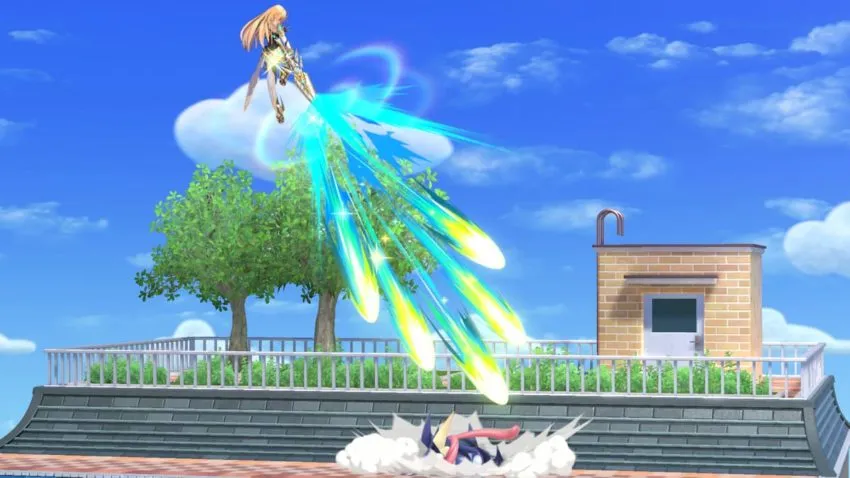
As such, Mythra doesn’t deal very much damage. Her hits are more for flustering enemies, slowly building up damage, ideally so you can switch to Pyra to finish the job. She does have some potential kill moves, like her forward and down smash attacks, both of which deal respectable knockback.
What you really want to do with Mythra is position her below your opponent. Knock your enemy into the air and it’s easy to juggle them with Mythra’s quick up aerial attacks. They don’t have the best range, but the start and end lag on them are so low that you can use a different attack if your first misses.
A decent package deal
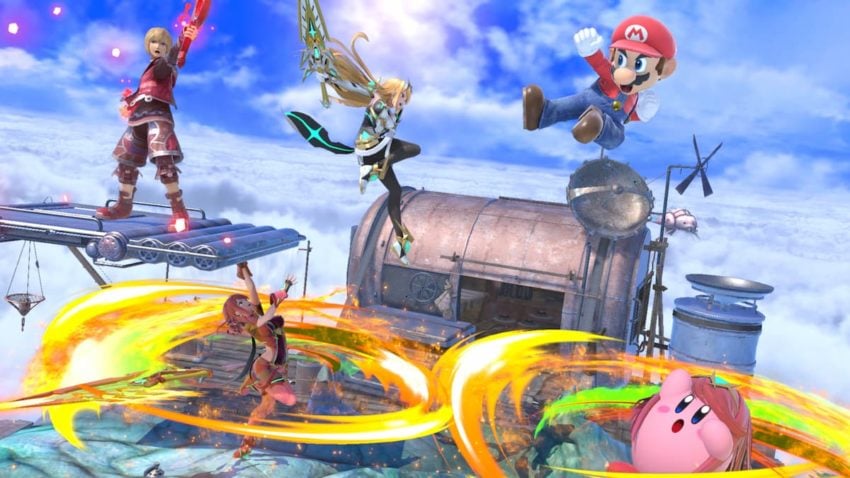
Using Pyra and Mythra together is pretty straightforward. You’ll want to use Mythra’s quick attacks and move speed to rack up damage before bringing in Pyra to seal the deal. That being said, Mythra has her own situations where she can easily secure a knock-out on your enemy — you just need to look out for situations where an opponent can be edge guarded well above the stage. That, or kill them off the top with a chain of up aerials.
The duo does have some enemies though, and they’re all ranged attack users. As swordfighters, Pyra and Mythra have to get in close to take enemies out. Pyra’s side special, in which she throws her sword, can counter these players, but it’s also slow and leaves Pyra open to punishment. If you’re faced with someone spamming ranged attacks, go with Mythra. She’s still not great in these matchups, but at least she can close a distance quickly and then maintain it.
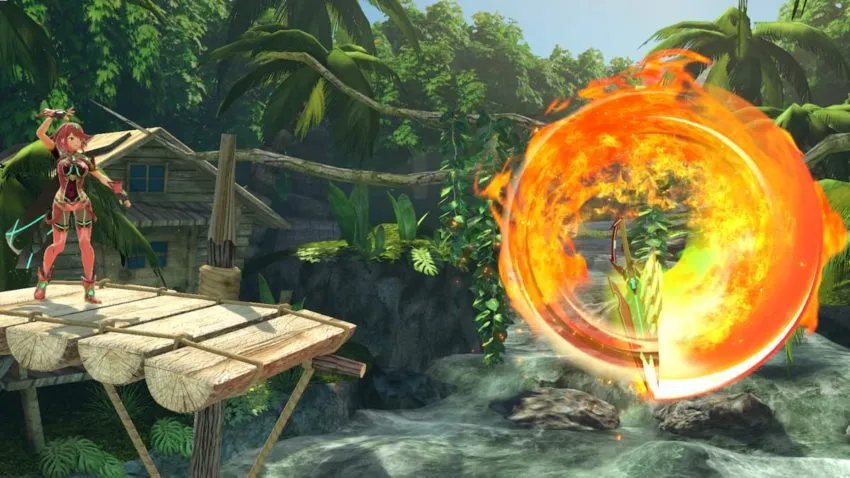
In all, Pyra and Mythra aren’t anything game-changing. They’ll be fun to play as against friends since they genuinely add something new to Super Smash Bros. Ultimate. However, if you’re a more serious player, maybe someone that enjoys the Ultimate competitive scene, Pyra and Mythra aren’t going to change up the game any time soon.

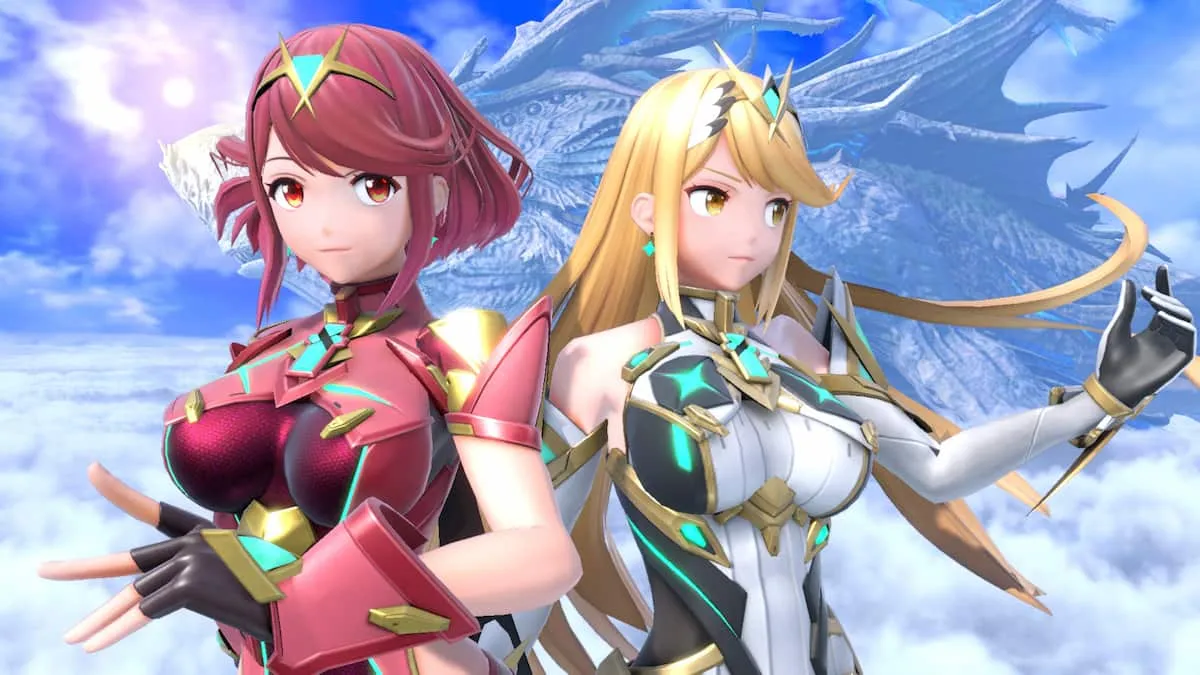

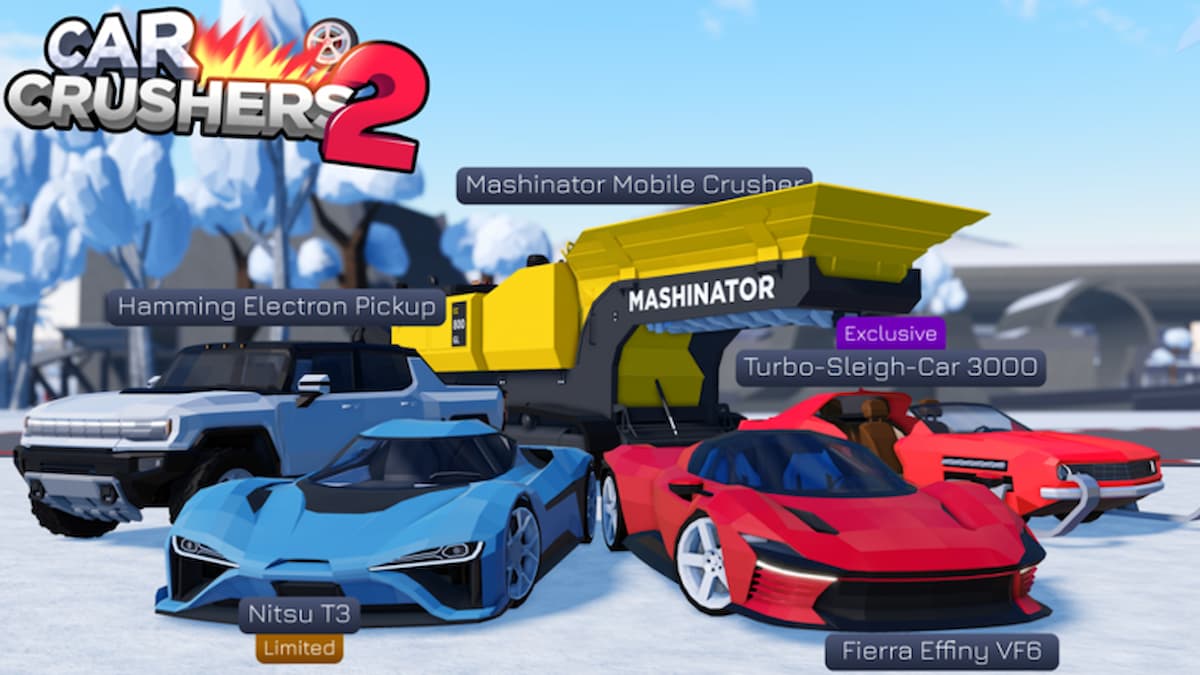



Published: Mar 5, 2021 06:26 pm